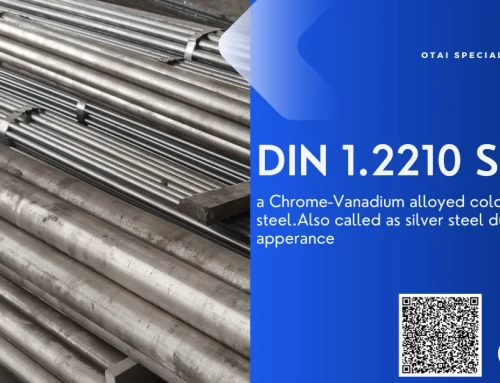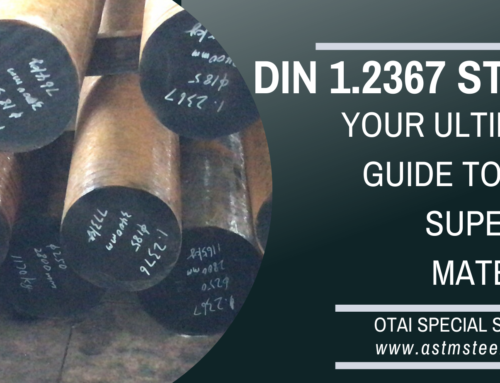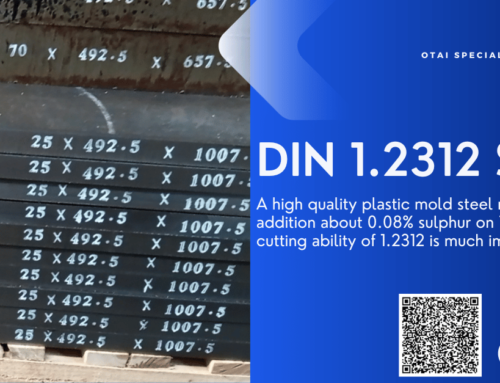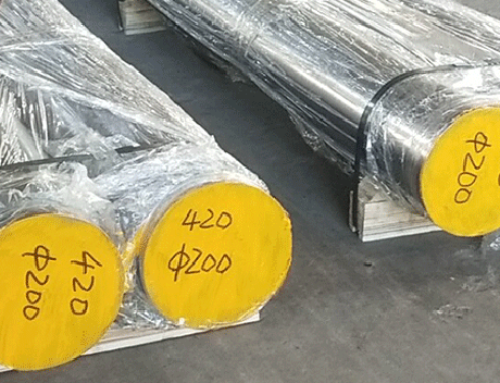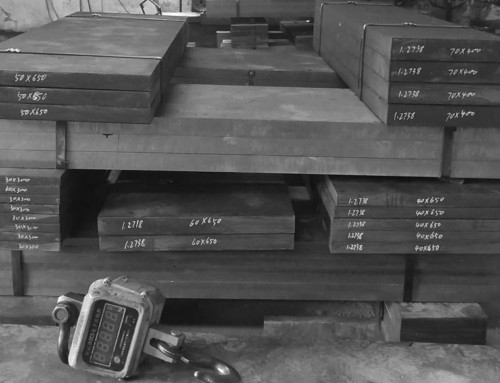H14 steel is one steel grade in ASTM A681 standard. AISI H14 chromium hot-work tool steel, with a touch of tungsten, boasts enhanced high-temperature attributes and commendable heat resistance. It displays minimal size alteration during the hardening process, making it apt for enduring die casting dies.
1. What is H14 Steel?
H14 steel is known as a hot work tool steel, recognized for its notable wear resistance, strength, and toughness. It’s typically used in the creation of cutting tools, dies, and various forms of machinery where its superior characteristics are beneficial. This particular steel has had tungsten added to it, enhancing its high-temperature properties and heat resistance. One of the appealing features of H14 material is its minimal size change during the hardening process, which makes it suitable for long-run die casting dies.
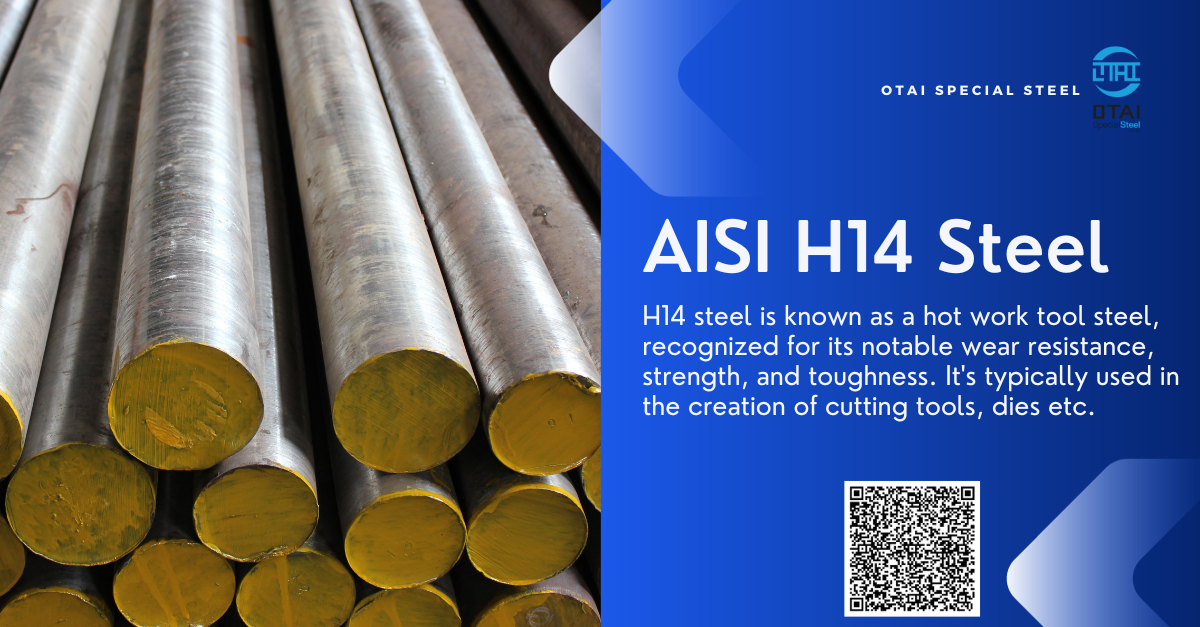
2. Supply Range of H14 Tool Steel
- Round Bar Size: Φ14-800mm, MOQ 1000 kgs per size or total order min 25 tons.
- Steel Plate Size: 16mm-600mm
- Length: random length
- Condition: Annealed, black surface or peeled / machined surface
3. Relevant H14 Hot Work Steel Specifications and Equivalent Steel Grades
| Specification | Equivalent Grades |
|---|---|
| AISI H14 | DIN 1.2344, JIS SKD61 |
4. H14 Tool Steel Chemical Composition
| Grade | Chemical Composition | |||||||||||
| C | Si | Mn | P | S | Cr | W | ||||||
| H14 | 0.35 | 0.45 | 0.80 | 1.25 | 0.20 | 0.60 | 0.03 | 0.03 | 4.75 | 5.50 | 4.00 | 5.25 |
5. H-14 Steel Properties
| Properties | Metric | Imperial |
| Hardness, Rockwell C (air cooled from 982°C, 30 mins) | 52 | 52 |
| Hardness, Rockwell C (air cooled from 1010°C, 30 mins) | 55 | 55 |
| Hardness, Rockwell C (air cooled from 1038°C, 30 mins) | 56 | 56 |
| Modulus of elasticity | 207 GPa | 30000 ksi |
| Charpy impact (V-notch; air cooled from 1010°C; 490°C temper temperature) | 12.9 J | 9.50 ft-lb |
| Charpy impact (V-notch; air cooled from 1010°C; 370°C temper temperature) | 16.3 J | 12.0 ft-lb |
| Charpy impact (V-notch; air cooled from 1010°C; 650°C temper temperature) | 17.6 J | 13.0 ft-lb |
| Machinability (1% carbon steel) | 70.0 – 75.0% | 70.0 – 75.0% |
| Poisson’s ratio | 0.27-0.30 | 0.27-0.30 |
6. Forging of H14 Material
Forging H-14 steel is a process executed under meticulously controlled conditions to maintain its integrity and superior mechanical properties. It’s a journey from raw steel to a masterpiece, ready to take on the challenges thrown its way.
7. Heat Treatment of H14 Tool Steel
Annealing:
-
- Heat slowly to 1550-1600°F (843-871°C).
- Hold the material at this temperature until it’s uniformly heated.
- Slowly cool in the furnace at a rate of 20°F (10°C) per hour to 1200°F (649°C), then cool in air to room temperature.
Hardening:
-
- Preheat slowly to 1400-1450°F (760-788°C) and equalize.
- Then heat more rapidly to 1900-1950°F (1038-1066°C).
- Quench in air or oil to below 150°F (65°C) to attain maximum hardness.
Tempering:
-
- After hardening, H14 tool steel will be extremely hard but also very brittle, so tempering is essential to restore some toughness.
- Heat uniformly and slowly to a temperature suitable for the desired hardness. Typical tempering temperatures for tool steels range between 400-1150°F (204-621°C), but the exact temperature will depend on the desired final hardness and application of the tool. Multiple tempering cycles might be beneficial.
- Cool in still air to room temperature after reaching the tempering temperature.
Stress Relieving:
-
- If machining or grinding is performed on the tool, it may be beneficial to stress-relieve the part to prevent distortion or cracking.
- Heat slowly to 1100-1250°F (593-677°C), hold for a suitable duration to relieve the stresses, and then cool slowly to minimize the chance of distortion.
8. Application of H-14 Steel
The H14 steel material finds its prowess showcased in long-run die-casting dies, where its high-temperature resistance and minimal size change during hardening come into play, ensuring prolonged die life and operational efficiency.
- Die Casting Dies: These steels can resist the corrosive effects of molten metal and are commonly used for aluminum, zinc, and magnesium die-casting.
- Forging Dies: They can handle the impact and abrasion of hot forging.
- Extrusion Dies: Especially those for non-ferrous materials.
- Hot Shear Blades: For cutting hot metals.
- Punches and Dies: For hot work.
9. Where to buy H14 Steel ?
With over 20 years history, Otai is one of best supplier for those tool steel and alloy steel. Reach out to us via email at jeremy@otaisteel.com or WhatsApp +8613610149979, and we offer you best H14 tool steel price to save your cost. Now and then there is H14 steel sale price, so don’t miss it.
FAQs
- What distinguishes H14 hot work tool steel from other tool steels?
- H14 steel boasts superior high-temperature properties and wear resistance, making it ideal for demanding applications.
- Is H14 material suitable for long-term projects?
- Absolutely, its minimal size change during hardening and high-temperature resistance make it suitable for long-term applications.
- How does the addition of tungsten enhance H14 tool steel’s properties?
- Tungsten contributes to improved high-temperature properties and heat resistance, making H14 steel a reliable choice for high-stress environments.
- What are the common industries that utilize H14 material steel?
- Industries that demand high wear resistance and superior mechanical properties, like the die-casting industry, often rely on H14 steel.
- Can I get H14 tool steel customized to my project requirements?
- Definitely! Reach out to us to discuss your specific needs and how we can tailor H14 steel to meet your project demands.

